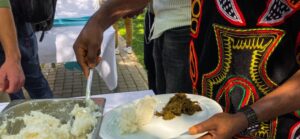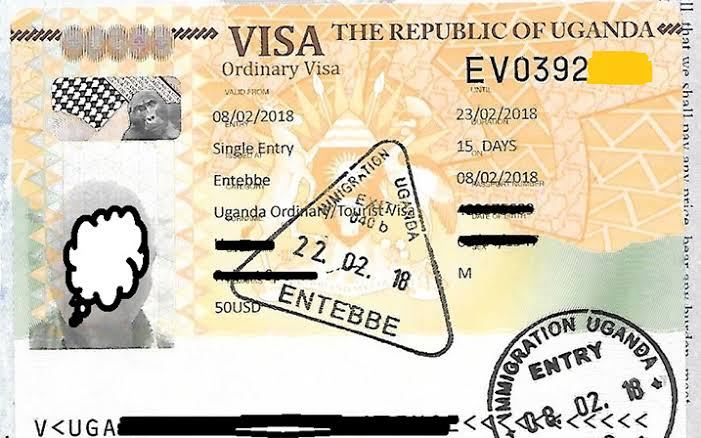- GET IN TOUCH WITH US:
- +256 753518160
- +256 777842166
- info@experiyatourcompany.com
Are Rwanda’s Lakes Worth Visit?
May 3, 2025Why is Volcanoes National Park So Famous?
May 4, 2025What’s the Best Rwandan Dish?
When I think about Rwanda, I don’t just picture the rolling green hills, the kindness of strangers, or the music that fills the air during family gatherings. I think of food. I think of the warmth of the kitchen, the stories shared while peeling cassava, and the pride that comes with preparing a dish passed down through generations. If you asked me what the best Rwandan dish is, my answer comes not from a cookbook but from my soul.
The Power of Simplicity: Why Rwandan Food Matters
Rwandan cuisine isn’t about extravagance or over-complication. It’s about honest, wholesome ingredients, often grown in your own backyard or the neighbor’s garden. It’s about patience. Sharing. Remembering where you came from. Each dish tells a story of resilience, love, and deep cultural pride.
Our meals aren’t just about feeding the body. They’re about connection. That’s what makes this question what’s the best Rwandan dish? so meaningful. Because we’re not just talking about food. We’re talking about memory.
Ugali and Isombe: The Comfort Pair That Never Fails
Let’s start with the classic duo: Ugali (or “Ubugariâ€) and Isombe. If you’ve ever dipped a firm scoop of ugali into a bowl of warm, rich cassava leaves mixed with peanut sauce and palm oil, you know what I mean when I say “comfort food.â€
My grandmother used to say, “Isombe doesn’t need too much to taste like heaven just love and patience.†We’d spend afternoons pounding the leaves, slowly cooking them, letting the flavors marry like old friends reuniting.
Ugali, made from maize flour and water, is humble but mighty. It holds the meal together both literally and metaphorically. For many Rwandans, this combination reminds us of Sunday afternoons at home, when the family table was full and laughter came easily.
Brochettes: The Spirit of Celebration
When Rwandans celebrate really celebrate there will be brochettes. These skewers of perfectly grilled meat (usually goat, beef, or fish), marinated in a blend of spices, onions, and sometimes beer, are more than a snack. They’re a tradition. A ritual.
I still remember the sound of sizzling skewers on open grills by the roadside, the smell drifting through the air, drawing neighbors together. Brochettes are social. You don’t eat them alone. They’re shared over jokes, drinks, and endless stories.
Ask anyone who’s been to a Rwandan wedding, family party, or weekend hangout they’ll tell you brochettes are more than food. They’re a celebration of togetherness.
Ibihaza: The Dish That Speaks of Home
One dish that often gets overlooked by outsiders but is deeply loved at home is Ibihaza boiled pumpkin mixed with beans. It’s a simple dish, yes, but one that brings a wave of nostalgia with every bite.
My mother would make Ibihaza after harvest season, when pumpkins were plentiful and beans had been dried and stored for the months ahead. As a child, I didn’t appreciate how special it was. But now, every time I taste it, I’m taken back to those early mornings of husking beans and hearing the rhythmic sound of a wooden spoon stirring in a clay pot.
There’s something healing about Ibihaza. Maybe it’s the texture, the sweetness of the pumpkin balanced with the heartiness of the beans. Or maybe it’s just the taste of home.
Akabenz: The Modern Favorite with a Bold Flair
In today’s Rwanda, if you walk into a local restaurant or bar, chances are you’ll find people ordering Akabenz crispy fried pork, often served with fried plantains and spicy chili sauce. It’s rich, indulgent, and full of flavor. A dish that represents how modern Rwanda is blending the old with the new.
It’s affectionately called “the Mercedes Benz of pork,†not because of luxury but because of how good it makes people feel. There’s joy in that first bite. It’s a favorite among young people, city crowds, and anyone looking to enjoy life a little louder.
But even Akabenz, in all its modern appeal, is rooted in something deeply Rwandan: a love of food that brings people together.
So, What’s the Best Rwandan Dish?
Truthfully? The best Rwandan dish isn’t just one plate. It’s the feeling of being full not just in your stomach, but in your heart. It’s the joy of eating with your hands, surrounded by laughter. It’s the pride of preparing food with love, whether it’s the softness of Ibihaza, the fire of Akabenz, or the nostalgia of Isombe and Ugali.
But if I had to choose, I’d say Isombe with Ugali takes the crown. Not because it’s the fanciest, but because it feels like a warm hug from my ancestors. Every bite carries memory, history, and love.
Final Thoughts: More Than Food
To know Rwandan food is to know Rwanda itself its people, its spirit, its unbreakable thread of community. Whether you’re a local rediscovering your roots or a visitor wanting to experience the country with your taste buds, don’t just ask what the best dish is. Ask what dish makes someone feel most at home.



